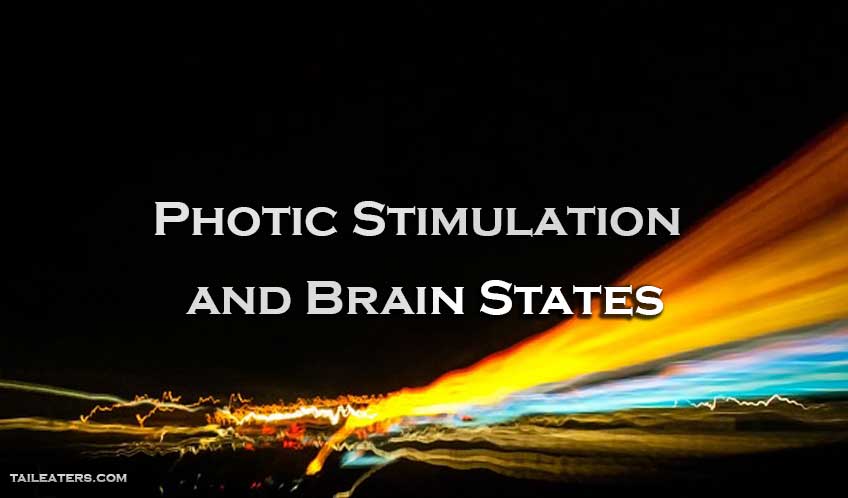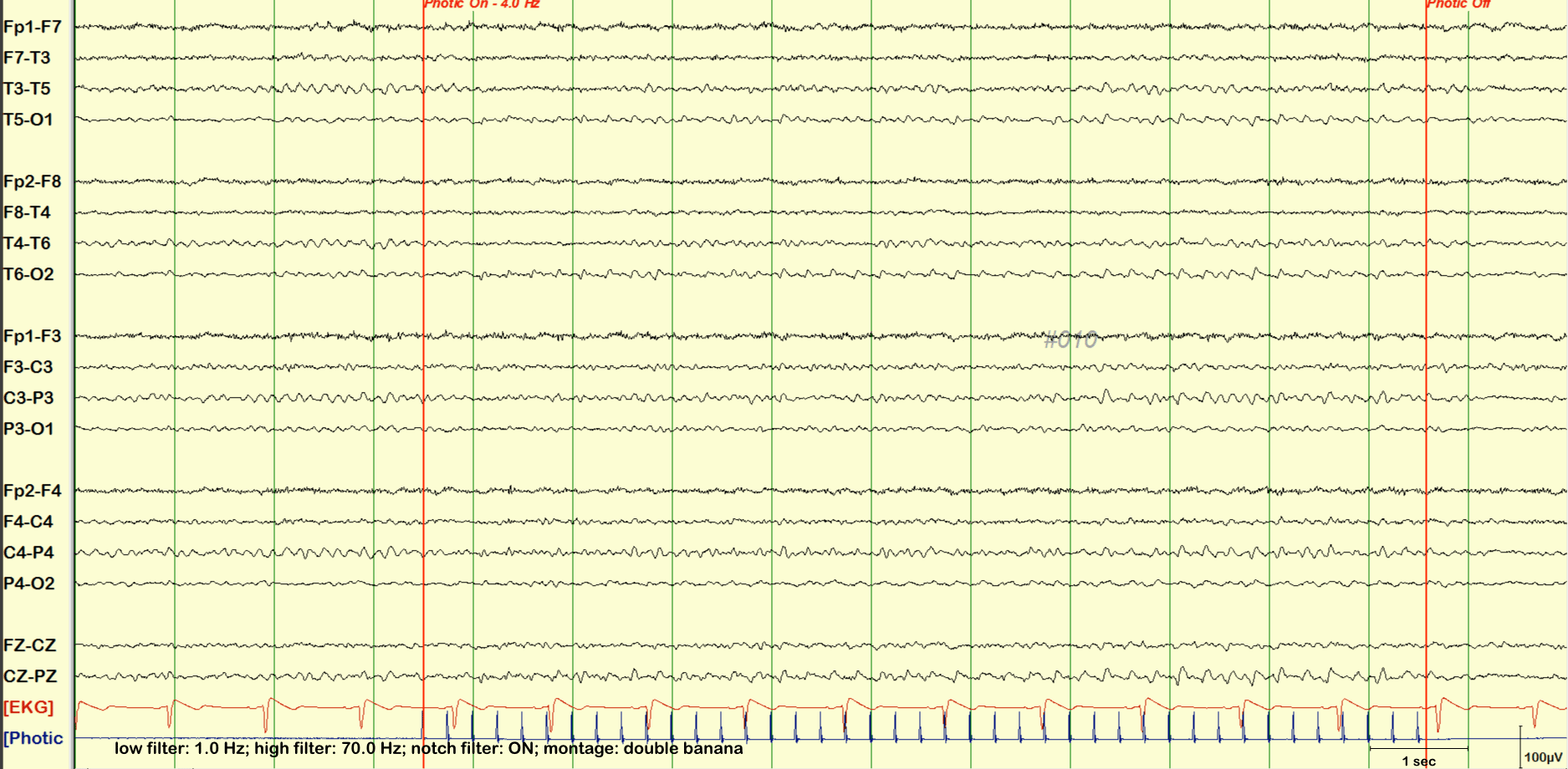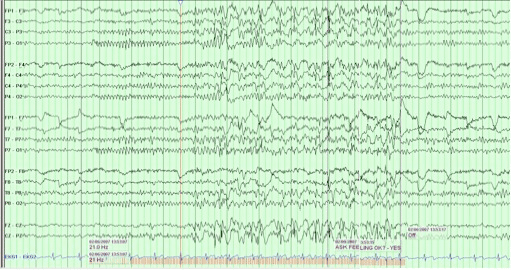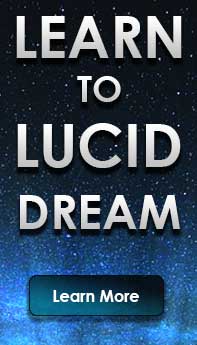
Photic Stimulation and Brain States
A few years back a few friends and I were playing a video game called Dead Island. I noticed that I became extremely tired whenever I played the game and even had to take power naps while my friends were off doing other stuff.. After finally speaking up about my sudden sleepiness to my friends, one of the friends said he experienced the same thing. Turns out that the game itself had a flaw! It had an issue with frame rates which caused some people to become tired or sick. At the time I didn’t understand the power of frame rates on human consciousness, but today I am becoming much more aware of the potential positives and negatives that frame rates and flickering light can have on human conscious states.
Over the last month, I have been training with a Registered Polysomnographic Technologists to learn more about electroencephalograms (EEGs) and the processes required in order to conduct studies on patients. Most of our patients at the clinic are those with some kind of memory impairment and older in age, which provides a unique view into the world of the mind.
During a standard EEG study, we use a strobe light in order to see how the mind reacts to the light pulses and identify any issues such as photic seizures that may occur due to the brain pattern modifications. Something that interested me is the link between the strobe-like impulses and the brain’s reaction to them.
Brain Driving Photic Stimulation
A common reaction to people who have photic stimulation from strobing is that the brainwaves themselves will react to the impulse by modifying the frequency on the EEG. A common term for this behavior is called photic driving. An instance of photic driving is when the strobe light is pulsing at say 4 Hz, or four flashes a second, the brainwaves specifically in the occipital lobes may match that of the 4 Hz or four sine waves in four seconds.
It is really amazing to watch when someone’s brain waves modify themselves to the beat of the light, you can see it happen quickly and can even count the pulse of the brainwaves to match that of the strobe.
In this image, you can see an example of photic driving taking place in an anonymous patient. You can see the 4 Hz frequency start at the bottom of the page, with the patient start to respond to the stimulation in the P3 – O1 and T6 – O2 rows.

A photo paroxysmal response is when the individual experiences photic responses but in such a way that they respond dramatically creating an epileptic event. Here is an example showing the event takes place in an anonymous patient. In this example, you can see the entire brain responds to the photic stimulation, not just in the ocular areas.
The God Helmet
The late Dr. Michael Persinger conducted research on photic driving but in a unique way. We used magnetic fields directed at specific areas of the brain to create modified brain patterns in a 4-5 Hz frequency. In doing so he was able to modify the magnetic field of the individual’s brain and cause a feeling of sensed presence in the individuals. This technique was concluded to be a possible tool to help treat depression and pain by modifying the default mode network.
Most people I would guess would not link Dr. Persinger’s God helmet to photic driving due to him not using light stimulation. Yet if we think about what an electrical magnet field does when it interacts with a conductor, it creates a current or the movement of electrons. The same thing is what happens when light enters the eyes and Persinger’s magnetic field hits the neurons in the brain, it creates a current through the brain which results in a change in brain patterns.
Binaural Beats
When you listen to music of any kind the brain is responding to the sounds just as it responds to light. This driving by music to modify the brain’s behavior is called audio entrainment. It takes those signals and modifies the individual’s mood and brain patterns to match that of the music, it is why music moves us. Specific sounds called binaural beats modify the brain’s function to specific frequencies to supposedly align the left and right hemispheres of the brain to better work together. An EEG technologist will tell you that if the brainwaves of each hemisphere are not operating similarly then that is considered abnormal and something to be concerned about. This hemispherical slowing is something that we are paying attention to when conducting an EEG study, as it may show some evidence of a stroke or another unknown neurological issue.
Though binaural beats may not better synchronize the left and right hemispheres of the brain, what it does do is change brainwave patterns which like photic driving can have profound effects. Studies have shown that binaural can be used to produce meditative states in humans through the use of various frequencies of sound. Even the CIA used binaural beats in order to create altered states, using it to conduct remote viewing experiments. It is also commonly known that photic stimulation, unlike sound, has a much greater effect on driving brainwaves which may produce better results than sound in modifying the brain to these specific states.
What Could Photic Stimulation Ultimately Achieve
Altered State Experiences
Photic stimulation has shown to not only change how the mind operates, but also cause sensations of being separated from the body. When I was first into Virtual Reality (VR) I noticed a common discussion in the VR community that they would notice an odd effect after using VR for a long period of time. They would oftentimes report having Out of Body Experiences. Though at the time I attributed this to VR being simulation like and the body/mind confusing itself with the simulated reality in the game, it’s also important to note that most VR headsets produce a low frame rate at varying frequencies. These low framerates are known to cause motion sickness, tiredness (much like my experience in the video game Dead Island), and dissociations.
An article titled Lights that flash in time with your heart can trigger ‘out-of-body’ experiences that could help treat anorexia talks about how light flashed at the speed of the individual heartbeat seems to cause a perceived separation from the subject’s body allowing themselves to identify as being out of their body. A company named Traveling Light LLC is also using photic stimulation at specific frequencies to produce Out of Body Experiences.
The Possible Positives
With this basic understanding of photic stimulation, it’s not fully known exactly what could result from specific light patterns used to modify human behavior. It is known that light has a dramatic effect on mood as well as depressive states in humans. There is some research showing that light stimulation at specific frequencies is having effects on rodents. In a study titled, Rhythmical Photic Stimulation at Alpha Frequencies Produces Antidepressant-Like Effects in a Mouse Model of Depression, researchers have shown that at least in rodents, light stimulation is having a profound effect on depressive states, even more, effective than some of the medications. Photic strobing also seems to show some relationship to the current Eye Movement Desensitization and Reprocessing (EMDR) Therapy which utilizes eye movement in order to create pattern-based changes in the human brain helping treat those with depression.
In another study titled Cognitive Improvement by Photic Stimulation in a Mouse Model of Alzheimer’s Disease, researchers have shown that photic stimulation is resulting in reduced plaques in the brain often attributed to Alzheimer’s disease. Some researchers are even using photic stimulation of specific cells in rodents’ brains to cause ketamine like effects.
Though these results of showing promise to improve the livelihood of the elderly and those who suffer from depression, no known research on humans have been conducted. Additionally, to the positives of photic stimulation, there are a number of concerns that should be accounted for in our current society.
The Possible Negatives
It is a known fact that every day we are barraged by countless screens, forms of media, and songs that alter our mood through their content. What isn’t discussed as a possible mechanism for mood manipulation is light frequency. Most screens that we watch either on our phones or computers operate at 60 Hz. Mode movies operate at 24 Hz, and computer games vary depending on the game, as well as the FPS that the game can achieve on a particular computer. With that being said, changing the frequencies that an individual sees on screens can essentially create photic stimulation at a specific rate, which changes the mood of the individual. This could possibly make them more or less susceptible to suggestions by putting them in a semi-trance state, cause them to feel tired, or even more active or receptive to information without their knowledge. There has not been a lot of research out there showing how or if photic stimulation is used by marketing, or media developers to create emotional and physical responses in the masses, but it is something to be considered as a possibility that it’s being used in ways that most individuals would not even notice.
Though there are negatives to the use of photic stimulation, it’s important to note that not all people react to the stimulation the same. It is not uncommon for patients who have EEGs done on them to show little to no photic driving. What does this mean for the individual and their resistance to being susceptible to outside influence? That is a great question and something that should be researched more to see if those individuals are less prone to hypnotism and other modes of suggestibility. There may be some correlation to the photic drive indicator.
Where to Go From Here?
Photic stimulation is a powerful tool that can be used to alter the conscious states of some individuals as well as something that can possibly improve the lives of those who suffer from depression or memory loss. There needs to be more studies done on the subject to see how much photic stimulation can affect individuals as well as what is currently being used in terms of light frequency to modify human behavior.
Lee Adams is a Ph.D. candidate in Jungian Psychology and Archetypal Studies at Pacifica Graduate Institute and host of Cosmic Echo, a lucid dreaming podcast, and creator of taileaters.com, an online community of lucid dreamers and psychonauts. Lee has been actively researching, practicing, and teaching lucid dreaming for over twenty years.
Learn to Lucid Dream and Gain Rewards
![]()
Learn to lucid dream and complete tasks for re-life rewards.




Recent Comments